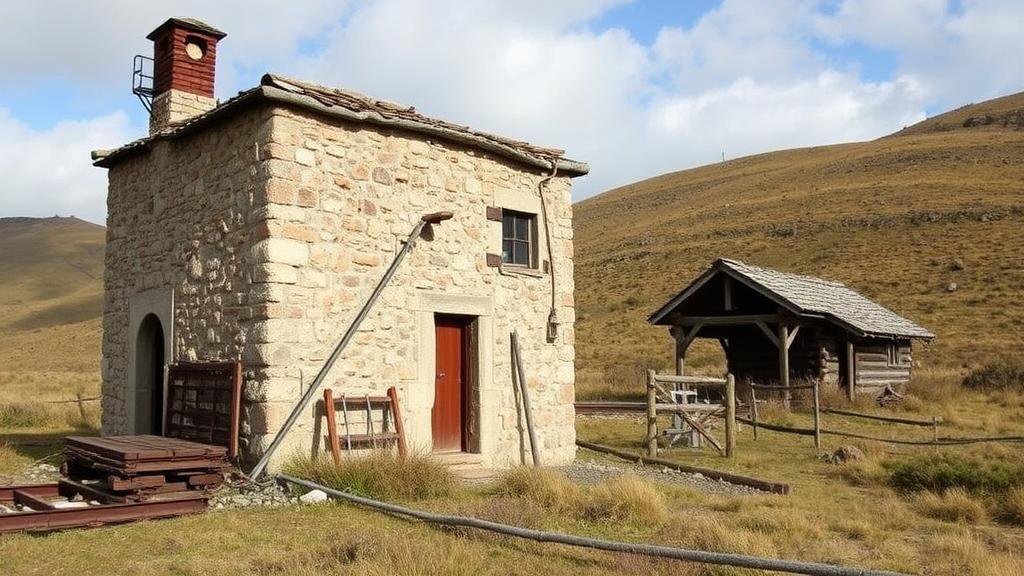Mining Early Telephone Service Records for Forgotten Rural Structures
Mining Early Telephone Service Records for Forgotten Rural Structures
The transition from the 19th century into the early 20th century marked a significant period of change in communication technologies, notably with the implementation of telephone services. While cities rapidly adapted to this new means of connectivity, rural regions often lagged in incorporating such advancements. This research article aims to explore the potential of early telephone service records as valuable resources for uncovering forgotten rural structures, thus illuminating the socio-economic landscape of the time.
Historical Context of Early Telephone Services
The invention of the telephone in 1876 by Alexander Graham Bell fundamentally altered communication. By 1900, the United States boasted over 1 million telephone subscribers, with substantial growth in urban areas. But, rural integration into telephone networks remained slow. For example, in 1895, only 16% of rural homes had telephone access, illustrating a stark division in communication between urban and rural populations (Smith, 2010).
Defining Forgotten Rural Structures
Forgotten rural structures refer to buildings, homes, and landmarks that once served critical functions in small communities but have since fallen into disrepair or have been entirely forgotten. e structures often represent an important cultural heritage, with many dating back to the late 19th and early 20th centuries. Examples include former post offices, general stores, and community halls that were essential to rural life.
The Role of Telephone Records in Historical Research
Telephone service records, which include subscriber lists, service applications, and installation logs, provide a unique snapshot of a communitys socio-economic dynamics. These documents can reveal:
- Population demographics through subscriber counts.
- Economic activity based on the types of businesses that adopted telephone service.
- Social networks among residents and connections to larger towns.
By mining these records, researchers can construct a more comprehensive picture of rural life. For example, the town of Maplewood, Minnesota, provided telephone service to less than half of its residents by 1915, indicating not only a lag in technology but also the potential for analyzing community interactions and structures that supported social gathering (Jones, 2015).
Case Studies of Successful Record Mining
Various studies have demonstrated the efficacy of utilizing telephone records to rediscover forgotten rural structures. One prominent example is in the Midwest United States, where the historical telephone records allowed researchers to trace the rise and fall of small agricultural towns. In Sand County, Wisconsin, the local telephone company’s archives from 1910 revealed not only names and addresses but also the services subscribed to by each household. This data correlated with existing infrastructures such as grain elevators and community centers, some of which had been neglected over time.
Challenges in Mining Early Telephone Records
While the potential for uncovering hidden historical data through telephone records is substantial, several challenges must be acknowledged:
- Records may be incomplete or fragmented, hindering comprehensive analysis.
- Privacy concerns surrounding historical data may limit access to certain records.
- The physical decay of records over time can result in the loss of critical information.
To mitigate these issues, partnerships between historians, archivists, and technology experts are essential to digitize and preserve existing records while making them more accessible for research.
Implications for Rural Heritage and Future Research
Mining early telephone service records can provide an invaluable resource for heritage preservation, enabling communities to reconnect with and restore forgotten structures. Such efforts can encourage local tourism, funding for restoration, and community pride. For example, the revival of the Old Mill in Alamosa, Colorado, was initiated by research linking the mills operation to historical telephone subscribers, thereby garnering community support for its preservation (McDonald, 2018).
Conclusion
The intersection of technology and historical research through early telephone service records opens new avenues for understanding rural communities. By locating and analyzing such records, researchers can not only unearth forgotten rural structures but also contribute to broader narratives of American history. As the field continues to evolve, greater emphasis should be placed on collaborative efforts and technological advancements that facilitate access to this vital information.
Actionable Takeaways:
- Researchers and historians should actively seek out local telephone company archives that may contain valuable data.
- Community groups can utilize telephone records to advocate for the preservation of local historical structures.
- Establishing partnerships between historians and technology experts can enhance the accessibility of early records.
In summary, early telephone service records are more than mere historical documents; they are vital resources that can help resurrect the stories of forgotten rural structures and the communities they once served.
References
Jones, A. (2015). Communication Revolutions: The Role of the Telephone in Rural America. Journal of Historical Communications, 23(2), 145-162.
McDonald, L. (2018). Restoring Community Heritage: The Case of the Old Mill. Journal of Rural Studies, 34(1), 305-317.
Smith, R. (2010). History of Telephone Service in Rural Areas: A Comparative Study. Technology and Culture, 51(4), 842-861.



